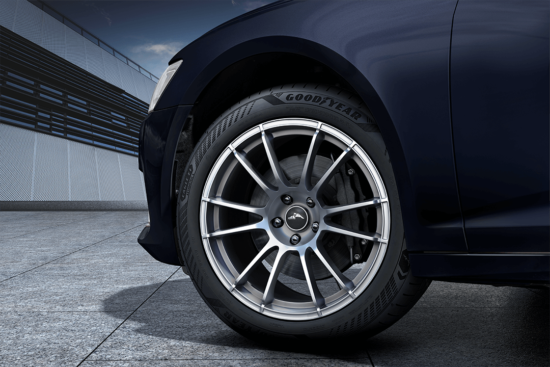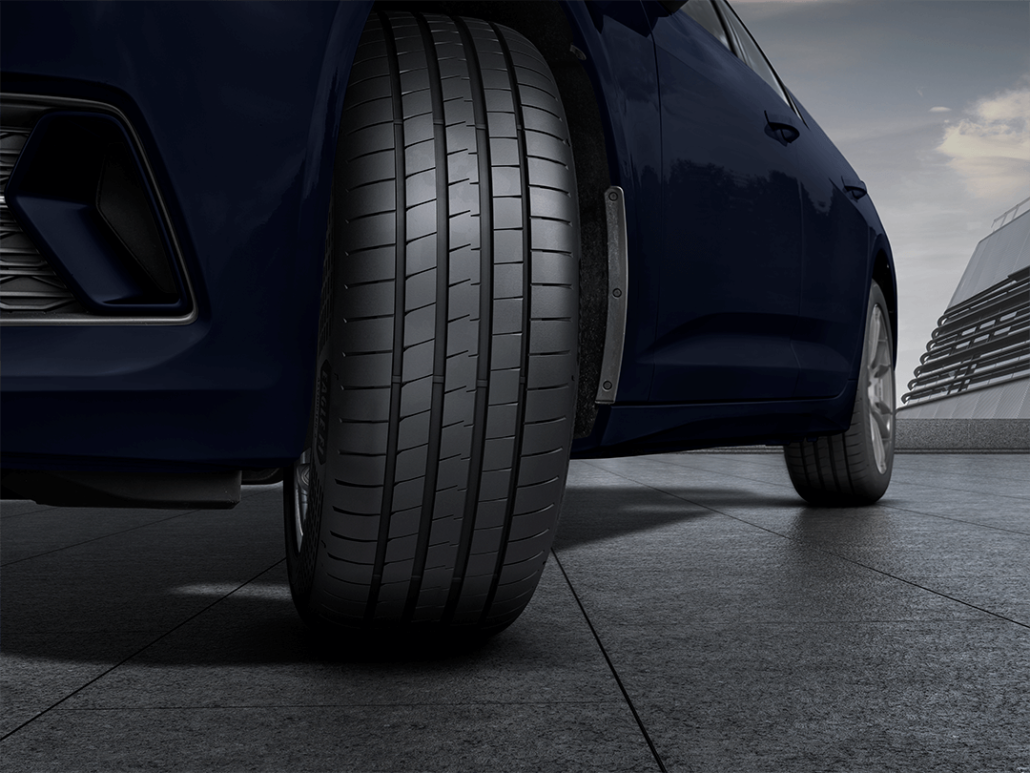Goodyear Eagle F1 Asymmetric 6 designed to take on ‘dramatic shifts in car market’
 Goodyear Eagle F1 Asymmetric 6 (Photos: Goodyear)
Goodyear Eagle F1 Asymmetric 6 (Photos: Goodyear)
Goodyear’s Eagle F1 Asymmetric 6 was launched in late 2021 with the promise that it would be “ready for anything”. The tyre has certainly impressed in its initial run of independent tyres tests, picking up wins in the Auto Bild, Auto Motor und Sport, and Tyre Reviews tests. But Goodyear’s mission for the tyre has gone beyond its traditional wet and dry performance characteristics; the manufacturer wants to bring this technology to a very wide selection of cars – hence its plan to offer 65 fitments between 17” and 22”, a relatively broad range, by 2023. The tyre and this range is designed to offer fitments for existing growth vehicle types, like SUVs, and future dramatic changes in the market, with a construction making it suitable for the wave of battery electric and hybrid vehicles quickly entering the car parc. In 2021, petrol cars retained a leading 40 per cent share, but battery electric (EV) cars took a record 9 per cent of the European market and hybrid (PHEV and HEV) grew to a significant 20 per cent share, according to ACEA data.
Laurent Colantonio, technology director consumer tyres EMEA, describes the impact of the blurring of the performance car sectors for Goodyear: “We have sizes in the Eagle F1 Asymmetric 6 range that are also in our Eagle F1 Asymmetric 3 SUV range, but with a different performance focus. Drivers may like the higher driving position of a crossover, but they demand the same handling characteristics as a performance saloon.
“That’s why we focused on higher strength construction materials, introducing Dry Contact Plus and Wet Braking Pro Technology to make Eagle F1 Asymmetric 6 ready for anything, on any type of performance car. We have been able to add these features whilst also reducing the weight of the tire, further enhancing its responsiveness and efficiency.”
Goodyear Eagle F1 Asymmetric 6 (Photos: Goodyear)
Demand for UHP tyres increasing
The demand for bigger tyres and greater performance is increasing. Goodyear notes that 400hp cars and weight exceeding two tonnes are not uncommon in the performance car segment, while even hot-hatches, cars on which previous generations of the new tyre have been test-winners, have seen a significant shift upwards in size and performance. When the Eagle F1 was first launched in 1994, the Volkswagen Golf GTI was on its third generation. With 115hp and a weight of just over a tonne, it offered a spirited drive. By the mid-2000s, when Goodyear replaced the Eagle F1 GS-D3 with the Asymmetric, the Mk5 GTI had over 200 hp, but had gained 300 kg. A decade later the Mk7 GTI Clubsport delivered around 300 hp with a kerb weight some 40 per cent higher than the Mk3.
This growth, mirrored in other segments such as performance saloons, had a significant impact on tyre development, Goodyear adds. The latest Golf GTI models have 225/40R18 tyres, with 19” options. Compare that with the 1990s driver, choosing 195/50R15 Goodyear Eagle F1 GSD-2 directional tyres to enhance their GTI’s handling.
Colantonio outlines what this meant for Goodyear: “The flagship 18 inch sizes of 20 years ago became the entry level for many performance cars. As tyres became larger, we chose to move from directional to asymmetric design to manage the extra dynamic load. This market shift also led us to ensuring we were a step ahead of the trend by using higher tensile steel and other higher strength reinforcement materials.
“Increased safety, emissions and convenience options have driven the size and weight of performance cars upwards. The technologies in Eagle F1 Asymmetric 6 are focused on delivering outstanding handling and performance as weight and power increases. The new generation of performance cars are electric, with over double the torque as some current petrol-powered performance cars.”
What innovations make the Goodyear Eagle F1 Asymmetric 6 suitable for EV fitment? The tyre’s reduction in overall tyre weight against the previous generation and an aerodynamic sidewall shape to manage turbulence and airflow around the tyre and the side of the vehicle. Its new compound technology reduces rolling resistance, to help increase electric range. Goodyear has also introduced a noise cancelling pattern that results in a sound reduction of 1 dB across the range and as much as 2 dB in selected sizes. This is aided by a thinner sipe design compared to Asymmetric 5 and an innovative radial chamfered groove to dampen noise frequencies. The tyre is therefore primed to maximise range and reduce noise.


 Giti Tire
Giti Tire Klarius
Klarius

Comments